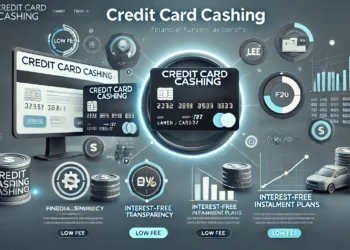
Personal loans often provide a lifeline when you need quick access to funds for various purposes, such as consolidating debt, home improvements, or unexpected expenses. However, the cost of borrowing—the personal loan interest rate—can significantly impact the affordability of the loan. Understanding the factors that influence these rates and how you can work towards securing a lower rate is crucial for making informed financial decisions.
Understanding Personal Loan Interest Rates
Personal loan interest rates are essentially the cost you pay to borrow money. These rates can vary widely based on several factors. Lenders assess the risk involved in lending you money, and this directly affects the interest rate you are offered. It’s vital to comprehend what these factors are to leverage them in your favor, ensuring you secure a loan with an interest rate that fits within your budget.
Factors Affecting Personal Loan Interest Rates
1. Credit Score
One of the most significant factors affecting personal loan interest rates is your credit score. A higher credit score indicates to lenders that you are a trustworthy borrower, likely to repay your loan on time. This assurance can lead to lower interest rates. Conversely, a lower credit score can result in higher rates as it signifies a higher risk to the lender.
2. Loan Amount and Term
The amount of money you wish to borrow and the duration of the loan term will also influence the interest rate. Generally, borrowing larger amounts or opting for a longer loan term can increase your interest rate. Lenders need to mitigate the risk associated with long-term borrowing, as economic circumstances can change over such periods.
3. Type of Lender
Different lenders offer varying personal loan interest rate. Banks, credit unions, and online lenders may each present unique terms based on their risk assessment models and market conditions. Online lenders might offer more competitive rates compared to traditional banks due to lower overhead costs, giving you a rationale to apply for personal loan online.
4. Debt-to-Income Ratio
Lenders also pay close attention to your debt-to-income (DTI) ratio, which is the percentage of your income that goes towards debt payments. A lower DTI ratio generally signals good financial health and makes you a strong candidate for a lower interest rate. The inverse also holds; a high DTI ratio can negatively impact the rates offered.
Tips to Secure the Lowest Possible Interest Rate
1. Improve Your Credit Score
Before applying for a personal loan, take steps to improve your credit score. Pay down existing debts, ensure timely bill payments, and rectify any inaccuracies in your credit report. Over time, these actions can boost your score and make you eligible for a lower personal loan interest rate.
2. Compare Lenders
Don’t settle for the first offer you receive. Instead, shop around and compare rates from different lenders. Using online comparison tools and prequalification processes can provide insights into the terms various lenders are willing to offer. This approach is particularly effective when you apply for personal loan online, where comparison tools are abundant and efficient.
3. Opt for a Shorter Loan Term
While it might increase your monthly payment, selecting a shorter loan repayment period can often result in a lower interest rate. Lenders typically associate longer terms with greater risk, which translates into higher rates. If possible, aim to balance affordability with a shorter term to minimize overall interest costs.
4. Negotiate Terms
There’s often room for negotiation, especially if you have a strong financial profile and a favorable credit score. Don’t hesitate to leverage these factors when discussing terms with a lender. Express your intent to apply for personal loan online and mention competing offers you’ve received, which might encourage the lender to provide you a better rate.
5. Consider Secured Loans
If you’re struggling to secure a favorable rate through unsecured personal loans, consider the option of a secured loan. Using collateral—such as a car or home—can reduce the perceived risk for lenders, thus potentially lowering your interest rate. However, be mindful of the additional risk of collateral forfeiture if default occurs.
Conclusion
Securing the best personal loan interest rate involves understanding the various factors that lenders consider when setting these rates. Your credit score, loan amount and term, the type of lender, and your debt-to-income ratio all play crucial roles. By strategically improving your credit profile, comparing lenders, opting for shorter loan terms, negotiating effectively, and considering secured loans, you can work towards obtaining a rate that fits comfortably within your financial landscape.
Whether you choose to apply for personal loan online or through traditional avenues, being informed and proactive can save you significant amounts in interest over the life of the loan. Personal loans can be powerful financial tools when used wisely, and securing a favorable interest rate is a critical step in ensuring that your financial future remains bright and unencumbered by unnecessary debt.



